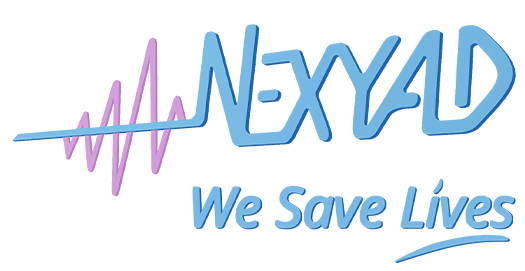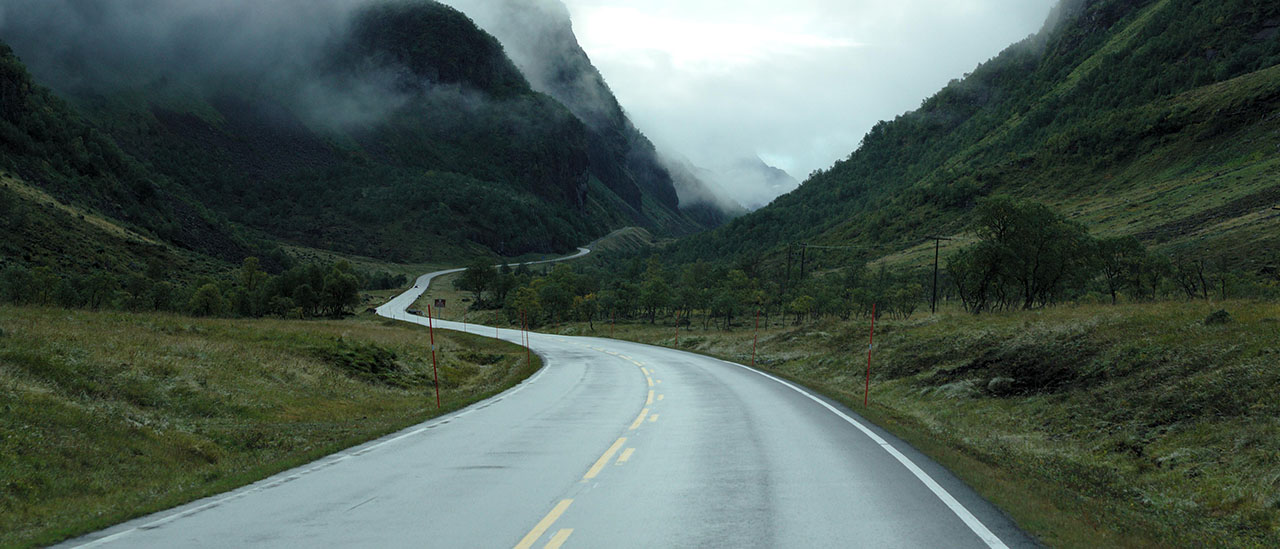Visibility Measurement for Road Safety
Visibility Measurement for Road Safety by NEXYAD
INTRODUCTION
Visibility is one of the structural elements of road safety. Indeed, the sense of sight is the only one that let us perceived the future path of the vehicle and then let us act on it : the driver « can see » in front of the vehicle, he predicts where the vehicle will go, and he can act on the controls (brake, steering wheel, …) in order to control the trajectory.
No other way allows us to anticipate.
If we model the task of driving with an automatic control engineering scheme, then we can notice that vision is used quite everywhere :

Vision plays a critical role in driving task, and what sizes the efficiency of this sense is « visibility ».
Visibility can be affected by many kinds of factors:
. the absence or insufficience of light (that is why the infrastructure is sometimes illuminated at night, and why vehicles are equipped with lighting.
. rain deposited on the windshield (that is why vehicles are equipped with wipers)
. mist on the windshield (that is why vehicles are equipped with demisting systems)
. humidity, fog or mist suspended in the air in the road scene.
Experts of road infrastructure add elements to enhance the visibility of the path :
. lane markings (white lines), reflective elements.
Similarly, automobile experts equip their vehicle with systems enabling them to improve visibility for the driver, but also allowing the vehicle to be more easily seen by other drivers.
We then understand that measurement of visibility is an important area of potential improvement of road safety in via ADAS.
VISIBILITY MEASUREMENT
The founders of the company NEXYAD have been working since the 80s on the measurement of visibility, early on military applications.
Indeed, it is the military who have studied since the 60’s which criteria allow human visual perception system to detect objects on their clutter.
For the military, the constant search for stealth (camouflage, for example) requires modeling the performance of the detection by human, depending on the light of a scene in the visible wavelength.
The work carried out tests on panels of thousands of soldiers, and led to predictive models for human vision of the ability to detect objects or not, depending on the image quality.
NEXYAD is one of the very few companies in the world to hold these models and have experience of their implementation for more than 20 years.
In simplified terms, we can consider that our eyes and brain need, depending on the size of the objects to be detected, a different contrast level.
We can then compare the contrast available in a scene (eg a road scene) with needed contrast to detect, , for each size of objects.
The comparison results in two scores :
. the apparent size of the smallest detectable object : as the apparent size of an object decreases with distance, it can then be deduced the maximum distance of detection for a reference object (a car, a truck, a pedestrian). Distances will obviously be different for every object because they don’t have the same size. Johnson criteria give let also estimate the maximum distance for object recognition, and the maximum distance for object identification.
. ease of interpretation of the visual scene. NEXYAD summarized this in a score computed from available and needed contrast: the Visual Quality Score (VQS).
This measure of visibility enables automotive application objectify the subjective. NEXYAD has developed two product lines from the same technology :
. a visibility test bench : VisiNex Lab https://nexyad.net/Automotive-Transportation/?page_id=159

Place a vehicle on a test bench and VisiNex Lab measuring visibility among time. If there are disturbs of visibility from rain, for example (using NEXYAD RainNex rain machine, or another rain machine), then we see scores for degraded visibility. If one starts the vehicle visibility restoration systems (eg in the case where the disturbance is the rain : the wipers), then we measure the performance of the visibility restoration.
VisiNex Lab is used by the automotive industry and is still the only tool for measuring the performance of wipers, demisting system, lighting system, …
. an embedded module for ADAS : VisiNex Onboard https://nexyad.net/Automotive-Transportation/?page_id=438
VisiNex Onboard measures the image quality and predicts the detection power of the driver and onboard artificial vision modules. So we get a rating of confidence for artificial vision systems.
Again, NEXYAD is the only non military company to dispose of this technology.

CONCLUSION
Every tier one company or car manufacturer should use NEXYAD modules VisiNex in order to measure performance, robustness, and reliability of their wipers, lighting, and of their camera-based ADAS.
VisiNex Onboard is currently under implementation into the asynchronous real time framework RT-MAPS.
For more information : sales@nexyad.net















